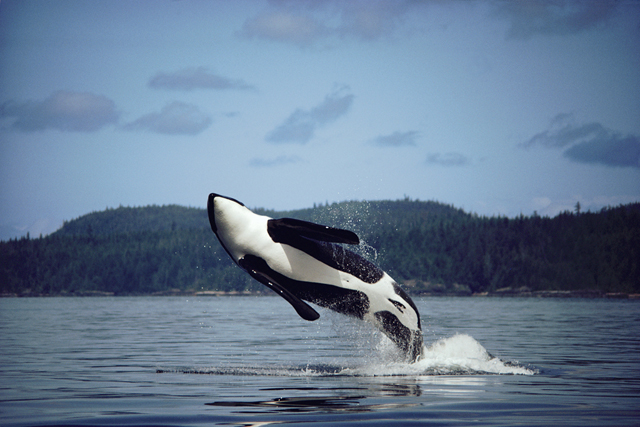10/26/11
WHITE SALMON, WASH. – For 31 years, Phyllis Clausen had waited for Condit Dam to relinquish its hold on the White Salmon River. On Wednesday at noon, she sat near the dam, black cane by her side, watching a live feed set to broadcast the dam's demise.
A Cape Canaveral-like hush settled over the crowd.
"Fire in the hole!" came a shout from below. Then a flash of light, a boom, a tremor in the ground and an astonishing surge of charcoal gray water gushed from a hole blown through dam's base, the first time in a century that the wild-and-scenic river has run free.
Clausen led Friends of the White Salmon River for a decade when the battle over the dam was at its peak. She kept her eyes glued to the screen, the smile never leaving her face, as the sediment-laden water churned and boiled downstream.
"I knew this day would come," said Clausen, 87. "I didn't know if I would live to see it."
In less than an hour, 92-acre Northwestern Lake just above the hydropower dam had completely drained, even faster than the six-hour time frame estimated by PacifiCorp, the dam's owner. Long-submerged logs surged downstream, passing through the 13-by-18-foot hole but not clogging it.
Upstream of the dam, the river rushed through the dark-brown, stump-strewn lakebed left behind, carving through a steep gully 100-feet deep.
By early afternoon, the muddy water had reached the Columbia River three miles downstream, a bolt of brown that signaled the river is already restoring itself.
At 125-feet high, Condit is the third largest dam in the nation to be decommissioned, behind two dams on the Olympic Peninsula's Elwha River, whose demolition also began this year.
The breaching eliminates the dam's power generation, enough to supply about 7,000 homes. It turns lakefront cabins into to riverfront properties, and ends the canoeing and fishing that Northwestern Lake provided for decades.
But breaching of the fish-blocking dam, built in 1913, opens up as much as 33 miles of stream for salmon and steelhead, including two runs on the endangered species list. When the dam is fully dismantled by the end of next summer, kayakers and rafters will have new whitewater to run on a river nationally known for epic whitewater and falls.
And it will fulfill the dreams of Clausen and others, including the Yakama Nation, that had longed for the river to run unshackled on its course from glaciers on Mt. Adams to the Columbia.
Clausen started with Friends of the White Salmon in the 1970s, when a local utility district talked of putting a half-dozen more hydropower dams along the river, effectively turning the White Salmon into a series of lakes. Activists beat back that proposal, then gradually worked toward dam removal.
After years of debate, PacifiCorp concluded that the costs of removing the dam, now pegged at $35 million, were about a third less than installing effective fish passage required by federal rules.
But dam removal was delayed four times as it wound through federal and state bureaucracies and opposition from county governments worried about the loss of hydropower and the lake.
The Northwest has seen a spate of dam removals of late, with dams on the Sandy, the Hood and the Rogue falling. Four Klamath River dams are scheduled to come down in 2020, and an acrimonious debate continues over removing lower Snake River dams to benefit fish.
American Rivers expects to hit 1,000 dams removed nationwide this year. The United States has about 79,000 relatively large dams.
But most of the Northwest's federally licensed hydropower dams have now obtained licenses to operate that will extend for another three to five decades.
The focus now will likely shift to removing smaller dams, many established decades ago for irrigation. Those dams block access to high-elevation tributaries important to salmon, a fish that needs cold water to thrive.
On the White Salmon, the emphasis will turn to river restoration. PacifiCorp will monitor the former lake bed for erosion, dredging more sediment if winter rains don't wash it away. The utility will also plant native trees, shrubs and grass to help stabilize the banks.
Clausen and her husband Victor, began living beside the river in 1974, and quickly grew to love the White Salmon's deep basalt canyons. Like the Yakama elders, their vision was to see salmon and steelhead return.
"They're beautiful, wild creatures," Clausen said. "I wanted to see them come home."
Watch Video: Condit dam is breached, letting the White Salmon River run free.
Read Original Article
 Award winning National Geographic photographer Charles “Flip” Nicklin will speak at Humboldt State University’s Van Duzer Theatre October 26, 7 to 10 p.m.
Award winning National Geographic photographer Charles “Flip” Nicklin will speak at Humboldt State University’s Van Duzer Theatre October 26, 7 to 10 p.m.

